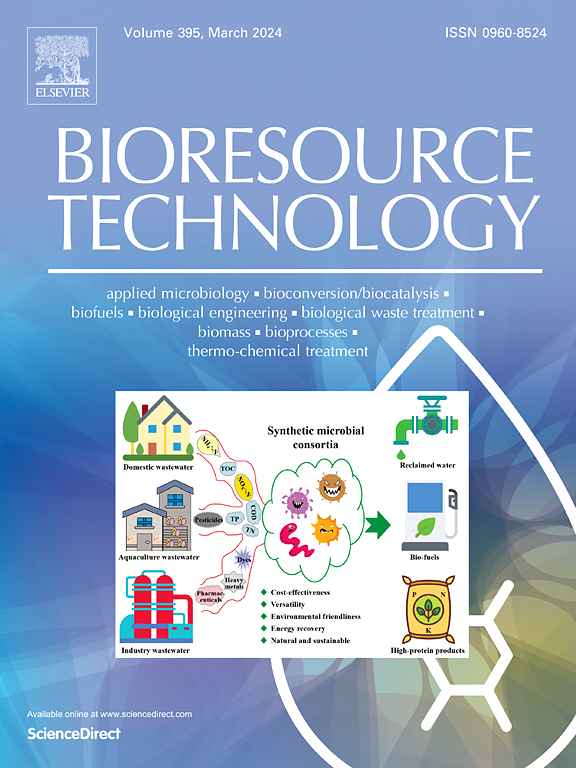Valorization of organic rich saline streams by purple phototrophic bacteria mixed cultures through polyhydroxyalkanoates production
IF 9
1区 环境科学与生态学
Q1 AGRICULTURAL ENGINEERING
引用次数: 0
Abstract
Saline wastewaters rich in organic compounds present significant disposal management challenges. A cost-effective alternative to expensive treatment methods is their utilization as feedstock for polyhydroxyalkanoates (PHA) production, a biodegradable substitute for traditional plastics, using purple phototrophic bacteria (PPB). This study evaluates the feasibility of using PPB mixed cultures for PHA production under near-seawater salinity conditions (30gNaCl.L−1), using a synthetic volatile fatty acid mixture comprising C2 to C5 chain lengths. A highly enriched PPB mixed culture (>95 % abundance) was obtained, attaining a PHA content of 24 ± 4 % and a productivity of 0.14 ± 0.02 gPHA.L−1.day−1. Batch assays demonstrated that increased light exposure and continuous availability of C3 to C5 volatile fatty acids enhanced PHA productivity, whereas osmotic shock (45gNaCl.L−1) negatively impacted PHA production. The obtained PHA productivities align with those reported in non-saline conditions, highlighting the PPB potential for valorizing saline wastewaters through PHA production, within a circular economy framework.

紫色光养细菌混合培养在生产聚羟基烷酸盐过程中对富有机盐流的增值作用。
富含有机化合物的含盐废水提出了重大的处置管理挑战。与昂贵的处理方法相比,一种具有成本效益的替代方法是利用它们作为原料,利用紫色光养细菌(PPB)生产聚羟基烷酸酯(PHA),这是一种传统塑料的可生物降解替代品。本研究评估了在近海水盐度条件下(30gNaCl.L-1)使用PPB混合培养生产PHA的可行性,使用含有C2至C5链长的合成挥发性脂肪酸混合物。获得了高度富集的PPB混合培养物(bbb95 %丰度),PHA含量为24 ± 4 %,产量为0.14 ± 0.02 gPHA.L-1.day-1。批量试验表明,增加光照和C3到C5挥发性脂肪酸的持续可用性可提高PHA的产量,而渗透休克(45gnacl -1)则对PHA的产量产生负面影响。所获得的PHA生产率与在非含盐条件下的报告一致,突出了PPB在循环经济框架内通过PHA生产来提高含盐废水的潜力。
本文章由计算机程序翻译,如有差异,请以英文原文为准。
求助全文
约1分钟内获得全文
求助全文
来源期刊

Bioresource Technology
工程技术-能源与燃料
CiteScore
20.80
自引率
19.30%
发文量
2013
审稿时长
12 days
期刊介绍:
Bioresource Technology publishes original articles, review articles, case studies, and short communications covering the fundamentals, applications, and management of bioresource technology. The journal seeks to advance and disseminate knowledge across various areas related to biomass, biological waste treatment, bioenergy, biotransformations, bioresource systems analysis, and associated conversion or production technologies.
Topics include:
• Biofuels: liquid and gaseous biofuels production, modeling and economics
• Bioprocesses and bioproducts: biocatalysis and fermentations
• Biomass and feedstocks utilization: bioconversion of agro-industrial residues
• Environmental protection: biological waste treatment
• Thermochemical conversion of biomass: combustion, pyrolysis, gasification, catalysis.
 求助内容:
求助内容: 应助结果提醒方式:
应助结果提醒方式:


